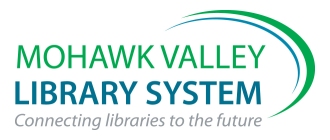 |
START WITH SCIENCE KITS
Science Programs for Children Ages 4 and 5 |
Objectives
- To expose children to mirrors other than flat reflective mirrors.
- To show uses for mirrors other than just to show your reflection.
|
Books : (In kit)
- The Kid’s Book of Kaleidoscopes by Carolyn Bennett
- This came with a cardboard kaleidoscope and shows the construction of and further information about kaleidoscopes.
- Making Faces by Nick Butterworth
|
Equipment : (In kit)
- Kaleidoscopes
- 4 with metal ends
- 1 with orange plastic end
- 1 with removable plastic end to show mirrors and “pretty things”
- 2 multicolor
- Mirrors
- 10 yellow backed “normal”
- 10 mylar concave/convex with instruction pamphlet
- (Note: DO NOT PUSH CENTER BUBBLE PART)
- 10 metal – which bend slightly when held horizontally and gentle pressure is applied
- Periscopes
- 3 plastic (1 yellow, 1 green, 1 black)
- 1 homemade cardboard (instructions included)
- 1 shoebox reverse image (instructions included)
- 1 red cardboard (made from kit)
- Miscellaneous
- Extra plastic baubles for kaleidoscope
- Extra colored plastic that can be held against kaleidoscopes
|
Resource Book : (Contact your local library to borrow)
- Carson, Mary Stetten. The Scientific Kid. Perennial Library 1989.
- Richards, Roy. 101 Science Tricks: Fun experiments with everyday materials. Sterling Pub. Co., 1990
- Simon, Seymour. Mirror Magic. Lothrop, Lee and Shepard Books, 1980.
|
Bookmarks : (In kit)
- Paper copies of the bookmark are included in the kit. PDF and JPEG copies are available here.
- PDF – 4 bookmarks per page. Ready to print in color.
- JPG – single high quality jpeg image.
|
Program
- Objectives
- To expose children to mirrors other than flat reflective mirrors.
- To show uses for mirrors other than just to show your reflection.
- Introduction
- What is a mirror? Does it have to be just out of glass? Can we find any in nature?
- A mirror is any smooth reflective surface.
- Where do we find mirrors? How do we use them?
- Introduce children to kaleidoscopes and periscopes.
- Program
- Read MAKING FACES by Nick Butterworth and notice how a mirror reflects an image and even a mood.
- Hand out yellow “regular” mirrors so they can see what they look like.
- Hand out mylar concave/convex mirrors with the concave side facing toward the child (this is the inside bowl-like part). All children should see themselves upside down. Encourage them to turn it around, but not yet over. They will stay upside down.
- Now have them turn the mirror to the convex side, so the lump faces them, and they should appear right side up.
- While still looking in the mirror, either side, have them hold it in one hand and bring their other hand, opened up, toward the mirror as if to grab the mirror. Their hand will be quite large and appear like a monster’s hand approaching.
- Hand out metal mirrors and show them how to bend the mirror slightly and see what happens to their image. These are two sided and work well with a partner so one will look fat as the other looks skinny.
- Mirrors are fun, but do they have uses? What? (Good time to mention dentist using them to see if teeth are clean.)
- Introduce kaleidoscopes by showing, seeing if anyone knows what it is called, and then passing one around.
- Take the kaleidoscope with the stars on it and the removable plastic end and take the baubles out so the children can see the three mirrors in the kaleidoscope. Let them look through it with just the mirrors and see how things look. Then put it back together and let them look again.
- Introduce periscopes by showing and seeing if anyone knows what it is called and how it might be used. Show how you can see around corners or look into higher places with them.
- Let children explore with all the mirrors, kaleidoscopes and periscopes.
- General
- It is a good idea to save periscopes until last since they seem the most appealing and once introduced, everything pales by comparison.
- Remind children not to push the center bubble part of the concave/convex mirrors.
- Children can duplicate the effect of the concave/convex mirror at home with a soup spoon.
- A child standing with a periscope can basically look eye-to-eye with a standing adult – yes, that is impressive to them.
|
Evaluation
Please print this evaluation, complete it and return to MVLS in the SWS red envelope.
Topics | About the Kits | Lending Policy

